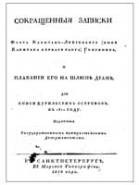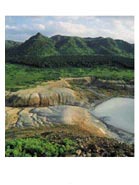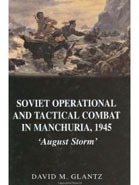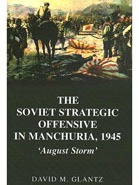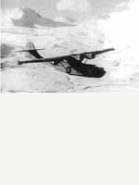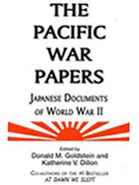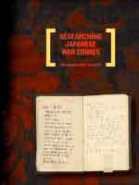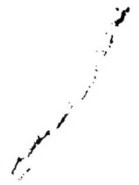В этом разделе мы собираем тексты, который считаем наиболее интересными и полезными для знакомства с историей островов Курильского архипелага.
Все тексты представленные в библиотеке были взяты в Интернете из архивов открытого доступа, были предоставлены авторами или оцифрованы с согласия автора, однако несколько книг уже были присланы читателями. Если авторы или владельцы авторских прав будут возражать против их нахождения в открытом доступе мы готовы немедленно удалить эти тексты из Курильской библиотеки.
Если Вы хотите здесь разместить отсканированные (или написанные) Вами произведения — присылайте их по адресу: admin@kuriles-history.ru
История
Сокращенныя записки флота Капитанъ-Лейтенанта (нынъ Капитана перваго ранга) Головнина, о плаванiи его на шлюпъ Дiанъ, для описи Курильскихъ острововъ, въ 1811 году.
Изданныя Государственнымъ Адмиралтейскимъ Департаментомъ. В Санктпетербургъ, въ Морской Типографiи 1819 года.
pdf (4 мб.)
1811 года Апреля 20 дня, получил я в Петропавловской гавани от Господина Морского Министра следующее повеление.
"Господину Капишан - Лейтенанту, командиру шлюпа Дианы и кавалеру Головнину. Отношение ваше от 24 Декабря 1809 года на имя Министра Военных Морских сил надписанное с приложением другого, я получил. Предпринятое вами на шлюпе Диане в Стиху плавание я одобряю; причины к тому вас побудившие весьма основательны: они доказывают особенное ваше попечение об общей пользе. Вместе с сим я нужным считаю уведомить вас, что ЕГО ИМПЕРАТОРСКОМУ ВЕЛИЧЕСТВУ угодно, чтоб сделано было точнейшее описание островов Южных Курильских и лежащих напротивъ „Удинскаео порта ШантирскихЪ, а равно и береговъ Татарии, и что бы описание сiе поручить произвести вамъ на шлюпЪ ДiанЪ. Сiе возлагаемое на васъ порученiе, описано подробно въ посланныхъ къ вамъ нынъже бумагахъ отъ Департамента, и проч."
Покорение мохнатых.
Журнал «Вокруг Света» №1 (2736) | Январь 2002. Рубрика «Заповедники».
pdf (248 кб.)
Свое название Курильские острова получили по имени народа, их населявшего. «Куру» на языке этих людей означало «человек», «курилами» или «курильцами» их называли казаки, а сами себя они звали «айну», что по смыслу мало отличалось от «куру». Культура курильцев, или айнов, прослеживается археологами на протяжении как минимум 7 000 лет. Они жили не только на Курилах, которых называли «Куру-миси», то есть «земля людей», но и на острове Хоккайдо («Айну-мошири»), и в южной части Сахалина. Своей внешностью, языком и обычаями они существенно отличались как от японцев на юге, так и от камчадалов на севере.
Немонголоидный тип лица, густая шевелюра, окладистая борода, выраженная растительность на всем теле — этнографы искали прародину айнов и на Кавказе, и в Австралии. В соответствии с одной из последних гипотез айны, испокон века жившие на своих островах, представляют собой «осколок» особой, древнейшей расы.
Soviet Operational and Tactical Combat in Manchuria, 1945: «August Storm».
Frank Cass publishers. London. Portland, OR. 2003.
pdf (8 мб.)
At the request of the other Allies, on 9th August 1945, a force of over 1.5 million Red Army soldiers unleashed a massive attack against the Japanese in Manchuria. Volume 2 covers the detailed course of operational and tactical fighting in virtually every combat sector.
The Soviet Strategic Offensive in Manchuria, 1945: «August Storm».
Fort Leavenworth, Kan.: Combat Studies Institute, U.S. Army Command and General Staff College. 1984.
pdf (9 мб.)
This critical examination of the final Soviet strategic offensive operation during World War II seeks to chip away at two generally inaccurate pictures many Westerners have of the war. Specifically, Westerners seem to think that only geography, climate, and sheer numbers negated German military skill and competency on the eastern front, a view that relegates Soviet military accomplishments to oblivion. Volume 1 covers in detail the background, strategic regrouping, and strategic planning and conduct of the offensive.
The North Pacific Campaign in Perspective.
The Northern Mariner/Le Marin du nord, V, No. 3 (July 1995), 1-14.
pdf (598 кб.)
From the earliest years of this century, American military planners focused their attention on the possibility of a conflict with Japan. It was primarily within that context that Alaska and the North Pacific became important elements in the nation's strategic thinking.
The Pacific War Papers: Japanese Documents of World War II.
Washington, D.C.: Potomac Books Inc.,1 edition. 2005.
pdf (2 мб.)
The Pacific War Papers is an annotated collection of extremely rare Japanese primary-source documents, translated into English, that provides an invaluable resource for historians and students of World War II. These naval and diplomatic documents come from the collection of the late Gordon Prange, the eminent scholar of Pearl Harbor, who obtained them from Japanese naval leaders while working for the Military History Section of the American forces that occupied Japan.
This edited collection covers three main topics: the Japanese navy before World War II, prewar diplomacy and politics, and Japanese naval operations and policy during the war. The documents include diary extracts and candid, short monographs written by high-ranking Japanese officers immediately after the war. They shed new light on the vast naval buildup before the war, the development of the navy’s operational concepts for war with the United States, the organization and tactics of aircraft carrier forces, and the failure of Japanese submarine operations.
Researching Japanese War Crimes Records: introductory essays.
Published by the National Archives and Records Administration for the Nazi War Crimes and Japanese Imperial Government Records Interagency Working Group, 2006.
pdf (3 мб.)
"In a world of conflict, a world of victims and executioners, it is the job of thinking people not to be on the side of the executioners."
— Albert Camus
Creating Ezo: The Role of Politics and Trade in the Mapping of Japan’s Northern Frontier.
Thesis. Graduate Program in History. Ohio State University, 2009.
pdf (5 мб.)
This thesis explores the various factors leading to the adaptation of western style scientific cartography by Japanese mapmakers in the employ of the Tokugawa government in the late eighteenth and early nineteenth centuries. It situates Japan not as a passive recipient of European cartographic techniques, but rather an active producer of geographic information in an exchange that began in the late 16th century. It focuses on the conflict over Ezo (modern day Hokkaido, Sakhalin, and the Kuril islands) between Russia and Japan as a catalyst for the Tokugawa Shogunate’s early 19th century mapping programs.
Beginning with an analysis of the development of mapmaking in Europe, I examine the political, military, and economic character of the broader exchange as well as its effect on the mapping of Ezo itself. I conclude that the Tokugawa government actively employed both native and foreign cartographic techniques to solidify its hold over both Ezo and represent Japan as a unified whole. Through continuing cartographic exchange western-style Japanese maps were transmitted to Europe, helping to formalize European representations of Japan.

